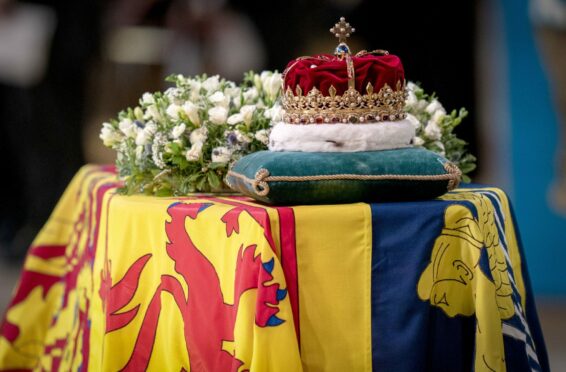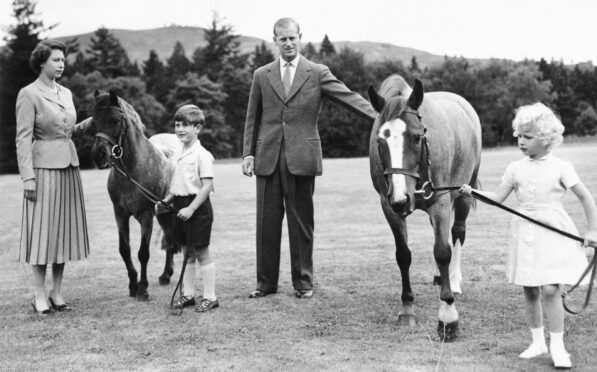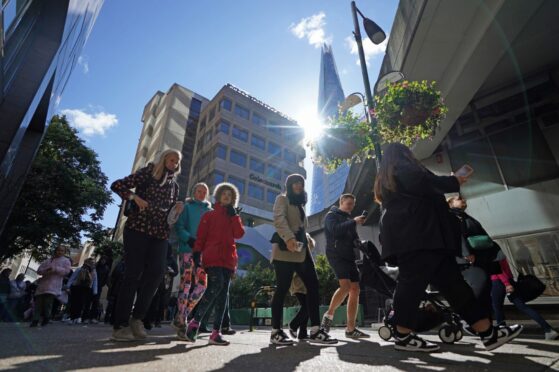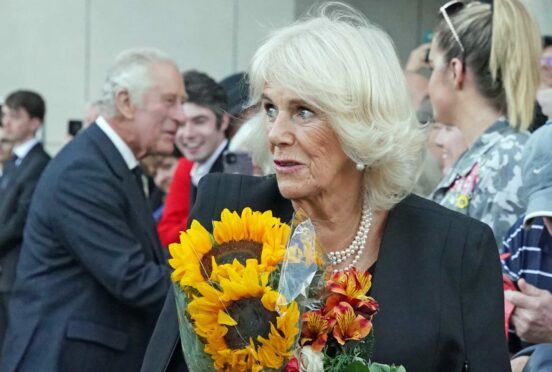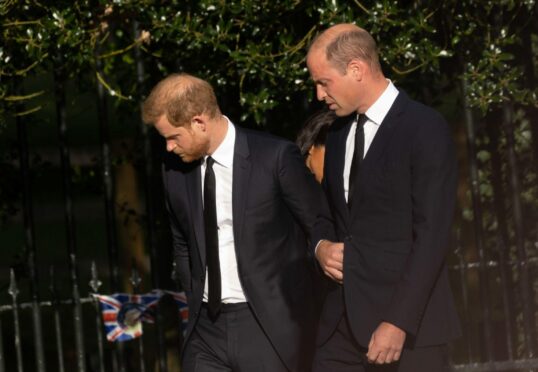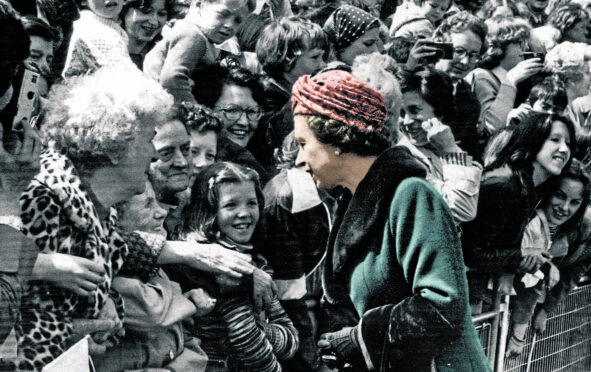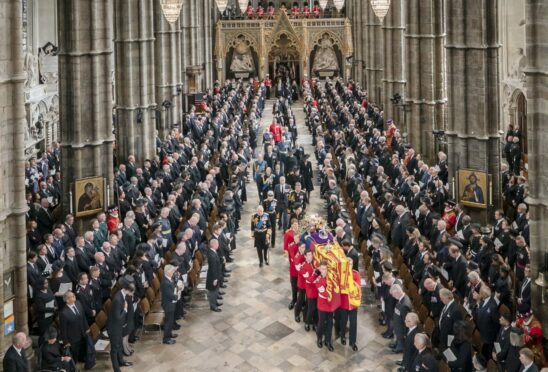
Written quickly but not in haste, it was placed in a drawer but not forgotten.
The choral score would remain there for 10 years but, on Monday, would be heard for the first time in Westminster Abbey where 2,000 mourners gathered at the Queen’s funeral while billions more watched around the world.
Now composer Sir James MacMillan has told how he wrote Who Shall Separate Us? in 2012 after being quietly approached to compose a piece for the occasion the year before.
“My first conversations, which were very secretive, took place in Westminster Abbey in 2011,” he said. “The text was suggested, and it was one of Queen Elizabeth’s favourite scriptural passages. It probably came directly from the importance of the text, which gets right to the heart of her own religious feelings and relationship with Jesus.
“I wrote it quickly and delivered it to my publishers, who got the material to the Abbey and it was shoved in a drawer until rehearsals began two weeks ago. While it was a sad occasion, I felt elated that I was able to contribute something.”
His piece, founded on the New Testament texts from St Paul’s Epistle To The Romans, speaks of the spiritual power of Christ’s love to transcend all barriers.
Its lyrics read: “Who shall separate us from the love of Christ? Neither death, nor life, nor angels, nor principalities, nor powers, nothing present, nor things to come, nor height, nor depth, nor any other creature, shall be able to separate us from the love of God, which is in Jesus Christ our Lord. Alleluia. Amen.”
MacMillan continued: “The incredible thing about Queen Elizabeth is the way she was able to talk about these sometimes very personal things in her public broadcasts in an honest and down-to-earth way, which seemed to communicate a simple but effective and profound faith to lots of people – not just in the UK but in the world – some of whom would share her faith, many of whom would not, yet she did it so effectively that people were drawn in to what she was saying.
“So, in that way, she was a true defender of faith and lots of people of different religions were encouraged that she was on our side, standing up for us.
“People say to me, ‘How do you feel about the head of the Anglican church?’ being a Catholic myself but, to be honest, most Catholics in the UK are amongst her greatest supporters because they saw in her words that she was a great friend and supporter of who we are, and she brought people of different denominations more and more together because of that. It’s that religious centrality of her life and work, and message and example, that meant so much to me.”
While he had played the arrangement on the piano, he only heard Who Shall Separate Us? performed for the first time during the funeral service.
“I wasn’t able to get to London as this is a busy time for me,” he said. “I had the opportunity but was delighted to give my place to someone more deserving. It meant I heard it for the first time while watching it on the telly.” Two pieces of MacMillan’s work were also used during the St Giles’ Cathedral service in Edinburgh a few days earlier.
MacMillan, who received his knighthood from the Duke of Cambridge in 2015 for services to music, is one of the world’s great living composers and had the opportunity to be in the Queen’s company on two occasions.
“The first time was at Buckingham Palace and it was for the 75th birthday party of the great Russian cellist, Mstislav Rostropovich. I was there because I’d written a cellist concerto for Rostropovich a few years earlier,” he recalled.
“The London Symphony Orchestra played a short concert before dinner and I got talking to the musicians and missed the memo that guests should be making their way into the dining space. At that point, the orchestra was ushered out another door and I found myself alone in this room, just myself and the royal family, with all these servant-types glaring at me.
“Before I could do anything, two big doors opened and I could see the rest of the guests where I should have been, standing as the royal family processed into this space. There was only one thing I could do and that was to join on at the end, channelling my inner Mr Bean.
“When I got to my table, all the other guests were looking at me in astonishment. At my table was the Polish composer Krzysztof Penderecki, Shostakovich’s widow and Prince Michael of Kent. There was also a place set next to me for Baroness Thatcher, but she didn’t turn up. It was that kind of gathering and I made an absolute idiot of myself in front of them all.
“The second meeting was during the Papal visit, when I met the Queen and the Pope within minutes of each other at Holyrood, during that incredible, historical event in 2010.”
MacMillan – whose second violin concerto, dedicated to and performed by Nicola Benedetti alongside the Scottish Chamber Orchestra, will premiere in Perth, Edinburgh and Glasgow this week – said he looked forward to hearing Who Shall Separate Us? performed again.
“My publishers have expedited publication of it,” he added. “They think there will be a lot of interest in it from choirs around the world. It’s not too difficult – it’s a piece a good amateur choir could do, as well as the professional ensembles. I look forward to hearing others taking it up, especially Scottish choirs.”
The coal miner’s grandson on a mission to bring high arts back to his roots
He has worked with some of the greatest musicians and most esteemed orchestras in the world, but James MacMillan gets as much satisfaction collaborating with community groups at home in Ayrshire.
The composer established the Cumnock Tryst in 2013 and the festival returns this week for four days of events.
Musicians like The Ruth Naomi Floyd Jazz Quartet will fly in from Philadelphia and Latvia’s Arta Arnicane will perform, as will talents from closer to home such as Aly Bain and Phil Cunningham.
“The great success story for me is we’re putting down roots deeper and deeper into the community. Quite a few local groups are coming together with professionals, like the A Musical Celebration Of The Coalfields project and Blue Sky Counterpoint, featuring pupils from Hillside Primary in Cumnock,” said MacMillan, whose coal miner grandfather gave him his love of music.
“High art festivals usually take place in leafier places with a bit more money but it doesn’t matter – people in the East Ayrshire community deserves this art provision the same as everyone else and I knew they would participate wholeheartedly.”
The Cumnock Tryst, Thursday to Sunday, thecumnocktryst.com

Enjoy the convenience of having The Sunday Post delivered as a digital ePaper straight to your smartphone, tablet or computer.
Subscribe for only £5.49 a month and enjoy all the benefits of the printed paper as a digital replica.
Subscribe © Robin Mitchell
© Robin Mitchell